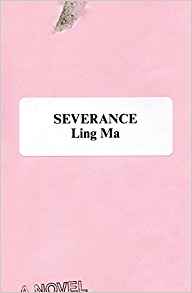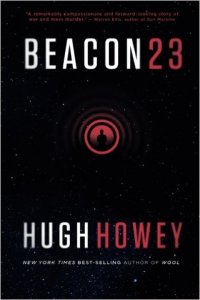Gary K. Wolfe Reviews Destroy All Monsters by Sam J. Miller
 Destroy All Monsters, Sam J. Miller (Harper Teen 978-0-06-245674-8, $17.99, 400pp, tc) July 2019.
Destroy All Monsters, Sam J. Miller (Harper Teen 978-0-06-245674-8, $17.99, 400pp, tc) July 2019.
I suppose the first thing to be noted about Sam J. Miller’s third novel, Destroy All Monsters, is that it has nothing to do with the venerable Toho kaiju film with that title, even though there are a few dinosaurs wandering about. They mostly show up in the “Darkside,” a version of reality occupied by a troubled gay teen named Solomon, who has retreated there following a series of traumas, the most important of which occurred when he and his best friend Ash were 12, and something caused her to fall out of their treehouse. Even though neither can quite remember the details, Ash has since been dealing with chronic depression, and Solomon has constructed for himself an elaborate fantasy world in which she is a Refugee Princess in hiding, and he, riding around on his pet allosaurus, must protect her from various evils, including a thuggish police force. The phrase “Destroy All Monsters” shows up in several pieces of graffiti that Solomon spots in his grim Darkside city, and he knows that the “monsters” refer to himself and anyone else with magical abilities. In other words, Solomon’s world is a cross between a disturbing psychotic fantasy and the old trope, familiar in everything from Slan to the X-Men, of the persecution of the gifted. We learn all this in sometimes disorienting chapters narrated by Solomon, which alternate with chapters narrated by Ash, who is facing a more traditional set of challenges in Hudson High School – all while trying to protect Solomon, who only shows up in school fitfully and is often virtually homeless.
Miller’s overall narrative strategy is to use Ash’s chapters to ground readers in a more familiar setting, while offering some of the thrill of decoding fantasy worlds in Solomon’s paranoid constructs, often signaling the links between worlds with such devices as a ringing bell or the sound of thunder. This turns out to be risky in a couple of ways. For one thing, Solomon’s vividly imagined dystopia, while offering insights into his real-world troubles, doesn’t really advance the story much. For another, Ash’s more grounded narrative begins to raise its own questions of reliability. She’s an amateur photographer who admires Diane Arbus and is mentored by a veteran photographer named Cass (the novel’s best secondary character), but her camera lens begins to reveal ominous shapes and shadows swirling around her subjects, presumably suggestive of their inner lives. Since the two main mysteries to be solved – what happened when Ash and Solomon were 12, and who’s responsible for a series of increasing disturbing acts of vandalism that seem associated with the school football team – depend on Ash’s narration, when that starts getting wobbly we’re uncertain whether she’s seeing bits of Solomon’s world, or has visions of her own, or is catching glimpses of an actual spirit world of some sort, which may or may not be connected to Solomon’s.
There has always been an interesting tension between the fantasy worlds of a particular character’s personal obsession or psychosis and fantasy worlds designed to be shared by the reader: a good many popular first-person accounts of mental illness present worlds as convincing and consistent as those of genre fantasy. Solomon’s world may be far more exciting and colorful than his rather grim life in Hudson, but it’s not much to hang a narrative on, and not one that permits easy resolution. To Miller’s credit, he doesn’t offer a magic bullet beyond the suggestion that Solomon’s visions will serve him well as an artist and musician (just as photography seems likely to do for Ash). The solution to the mystery of the unremembered event when they were 12 is shocking without being terribly surprising, but it, like the eventual answer to the reason behind those vandalism incidents, serves to remind us that Miller has a keen eye for the harsh realities that these kids have to live with, and he makes the kids themselves rewardingly complex, conflicted, and utterly real.
Gary K. Wolfe is Emeritus Professor of Humanities at Roosevelt University and a reviewer for Locus magazine since 1991. His reviews have been collected in Soundings (BSFA Award 2006; Hugo nominee), Bearings (Hugo nominee 2011), and Sightings (2011), and his Evaporating Genres: Essays on Fantastic Literature (Wesleyan) received the Locus Award in 2012. Earlier books include The Known and the Unknown: The Iconography of Science Fiction (Eaton Award, 1981), Harlan Ellison: The Edge of Forever (with Ellen Weil, 2002), and David Lindsay (1982). For the Library of America, he edited American Science Fiction: Nine Classic Novels of the 1950s in 2012, with a similar set for the 1960s forthcoming. He has received the Pilgrim Award from the Science Fiction Research Association, the Distinguished Scholarship Award from the International Association for the Fantastic in the Arts, and a Special World Fantasy Award for criticism. His 24-lecture series How Great Science Fiction Works appeared from The Great Courses in 2016. He has received six Hugo nominations, two for his reviews collections and four for The Coode Street Podcast, which he has co-hosted with Jonathan Strahan for more than 300 episodes. He lives in Chicago.
This review and more like it in the July 2019 issue of Locus.
 While you are here, please take a moment to support Locus with a one-time or recurring donation. We rely on reader donations to keep the magazine and site going, and would like to keep the site paywall free, but WE NEED YOUR FINANCIAL SUPPORT to continue quality coverage of the science fiction and fantasy field.
While you are here, please take a moment to support Locus with a one-time or recurring donation. We rely on reader donations to keep the magazine and site going, and would like to keep the site paywall free, but WE NEED YOUR FINANCIAL SUPPORT to continue quality coverage of the science fiction and fantasy field.







